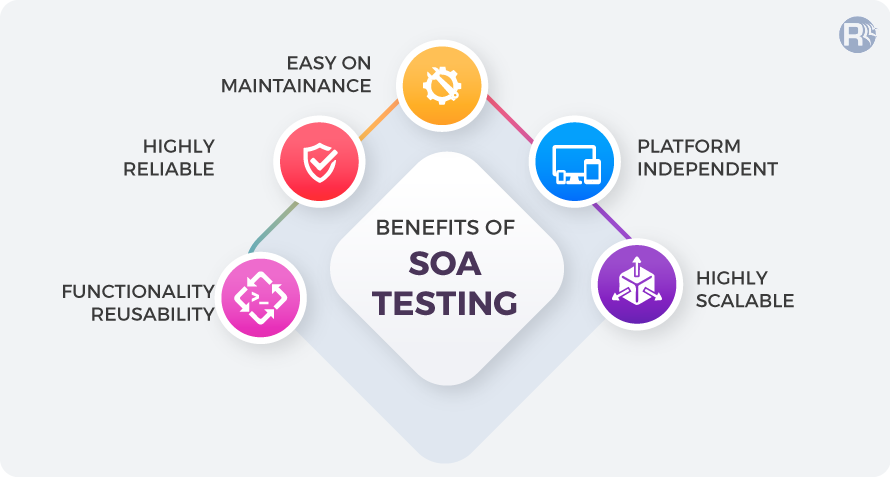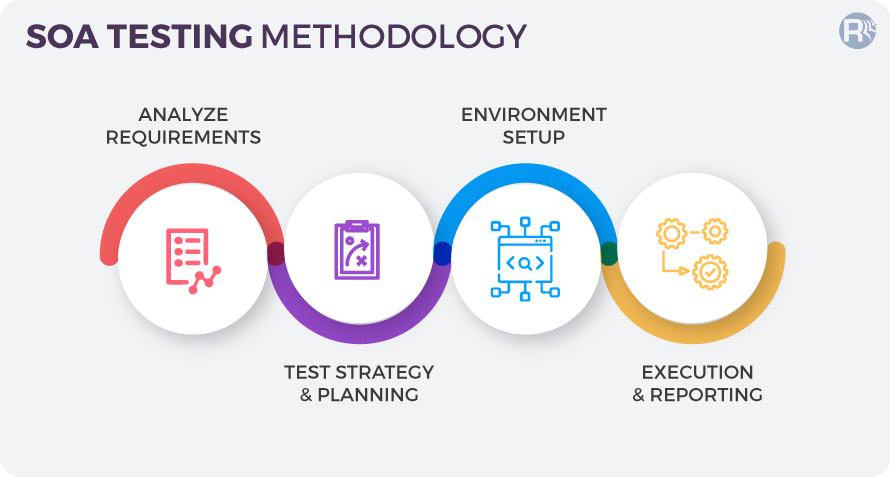Businesses today rely heavily on their IT systems to manage their day-to-day operations. It is therefore essential for them to streamline the digital processes that work in the background. Basically, to ensure seamless operations with the increased exchange of information – data & logic between varied systems. To serve the changing business demands better Service-Oriented Architecture or SOA acts as the backbone for any enterprise-grade system.
This style of software development design framework helps create business applications by integrating several IT systems of different functionalities using the same business logic interface. Both startups and enterprises adopt this architectural approach to enhance performance and simplify their development processes. And to ascertain SOA is capable of supporting the projected goal, an efficient testing approach is crucial.
Through this article, we will provide a comprehensive insight into the essential considerations of SOA testing and how to go about it.
What is SOA Testing?
Service-Oriented Architecture testing is about verifying the entire multi-layered architecture of a given service. Service in this case refers to a component of an application that performs one particular task. It is about the testing set of legacy systems, custom-developed software components, or any third-party components among others.
SOA Approach and Testing Strategy Essentials
- Service-Oriented Architecture is an amalgamation of software components, mid-tier components, back-end, and legacy apps.
- Unlike the traditional approach, the SOA architecture testing approach involves all the facets of operations along with an integration framework
- Rather than focusing on just the functionality or the front-end, it focuses on the integration layers
- To examine the business scenarios and processes, it is necessary to choose a collective cross-functional testing team based on the service-level agreements (SLAs)
- Process Prerogative:
- Business analysts gather test objectives & inputs from the client. Based on client review and approval, the test strategy & test plans gets executed
- Test architects consider the SLAs along with the quality of performance, service, security, and more while creating a test plan.
- It is important to train the technical team on the required SOA tools and technology. It would enable them to confidently turn test plans into executable test cases.
SOA Testing Challenges
- Multilayer architecture makes it difficult to isolate defects
- Services are interdependent between interfaces making the load prediction difficult
- Complex data needs because of testing process spread across multiple systems
- Security testing becomes complex for authentication and authorization owing to multi-service integration
Benefits of SOA Testing

Functionality Reusability
Services get reused which helps optimize cost and time. It reduces deployment, development, maintenance, and integration expenses. For example, numerous websites use Google maps for their address identification. They just leverage the existing service rather than creating a new location service.
Highly Reliable
Service-Oriented Architecture produces more reliable apps as it is easy to debug shortcode rather than large codes and fix the issue in a particular component without affecting other functionalities.
Easy on Maintainance
With SOA testing, update, upgrade and maintenance of the applications is easy as the approach is self-contained. As a significant feature, the user will not find any issues or complexity while responding to enterprise needs & technological advancements.
Platform Independent
SOA blends several services from various sources i.e. different platforms and codes making a complex unified system out of independent services.
Highly Scalable
Every business differs with respect to services or products it offers and so does their ever-increasing needs. SOA allows services to run on multiple servers within an environment, thus increasing extensibility. If the volume of data increases, they can be easily managed by running more instances of a service to fit into your enterprise needs.
SOA Testing Methodology
It starts with the testing of architecture and every minute element across functionality, security, performance, and interoperability. An accurate strategy with a bottom-up approach would help verify service components by considering the test design towards test execution. And, finally, an analysis report allows keeping track of all the discrepancies in the process.

Top SOA Testing Tools
You would agree the use of effective and relevant tools helps maximize productivity to produce accurate outcomes.
The selection of a proper toolset is critical for SOA testing. And for that listed below are the factors for consideration;
- Automated request generation
- Validation of responses using assertions
- QoS-enabled service enforcement
- Multiple transport protocols support
- Support for multiple messaging
Here’s a list of commonly used tools that offer robust support for SOA testing:
SoapUI
- An open-source tool meant for web service testing
- Supports multiple protocols including REST, SOAP, HTTP, JMS, and JDBC
- Can perform security, performance, functional, and load testing
Apache JMeter
- A quite popular tool by Apache used for testing APIs
- Analyzes and measures the performance of various software products, services and applications
- Contains a comprehensive list of GUI components to assist with the creation of test plans and element configuration
cURL
- A cross-platform command-line tool that allows testers to interact with different servers using varied protocols with the use of URL syntax
- Supports several internet protocols such as HTTP, FTP, HTTPS, IMAP, and more
- Compatible with almost every OS (operating system)
Make the Most of your Service-Oriented Architecture
To conclude, SOA enables the development teams to integrate the services into the core business solutions. An efficient testing approach is crucial to ascertain that a service consideration is capable of solving the intended goal. Throughout this article, we’ve tried to offer an idea about SOA, its uniqueness and how it will significantly help to effectively carry out the testing mechanism for the system.
Powered by more than two decades of experience in software testing, we’re competent in designing robust, reusable frameworks that minimize testing time and maximize test component reusability. As a reliable software testing services provider, we help with design, implementation, and support Service Oriented Architecture to streamline enterprise digital processes.
We adopt a systematic approach to offer web and SOA testing services. It helps accelerate the overall development process for global companies by minimizing risks and achieving business agility.











 30 Min
30 Min


